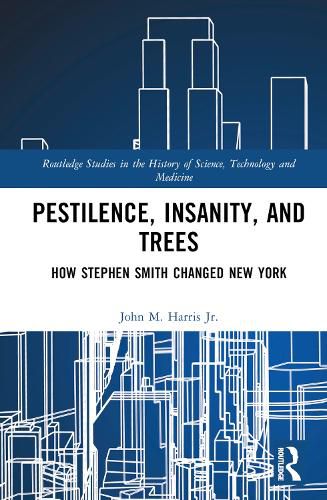Readings Newsletter
Become a Readings Member to make your shopping experience even easier.
Sign in or sign up for free!
You’re not far away from qualifying for FREE standard shipping within Australia
You’ve qualified for FREE standard shipping within Australia
The cart is loading…






This is the first full-length biography of New York surgeon and social activist Stephen Smith (1823-1922), who was appointed to fifty years of public service by three mayors, seven governors, and two U.S. presidents.
The book presents the complex life of Stephen Smith, a consistent figure in the history of public health, mental health, housing reform in New York, and even urban reforestation. Utilizing Smith's writings, public records, and recently discovered personal correspondence, this research shows how Smith succeeded where others failed. It also acknowledges that Smith was unsuccessful in convincing his fellow professionals to fight for a cabinet level public health department or to resist the rise of custodial care for the mentally impaired. Given Smith's many accomplishments, the book asks us to consider if what stopped him stops us, highlighting the relevance of Smith's story to contemporary debates.
Pestilence, Insanity, and Trees is a readable and well-documented narrative and a resource for students and scholars, filling gaps in the history of American medicine, public health, mental health, and New York social reform.
$9.00 standard shipping within Australia
FREE standard shipping within Australia for orders over $100.00
Express & International shipping calculated at checkout
This is the first full-length biography of New York surgeon and social activist Stephen Smith (1823-1922), who was appointed to fifty years of public service by three mayors, seven governors, and two U.S. presidents.
The book presents the complex life of Stephen Smith, a consistent figure in the history of public health, mental health, housing reform in New York, and even urban reforestation. Utilizing Smith's writings, public records, and recently discovered personal correspondence, this research shows how Smith succeeded where others failed. It also acknowledges that Smith was unsuccessful in convincing his fellow professionals to fight for a cabinet level public health department or to resist the rise of custodial care for the mentally impaired. Given Smith's many accomplishments, the book asks us to consider if what stopped him stops us, highlighting the relevance of Smith's story to contemporary debates.
Pestilence, Insanity, and Trees is a readable and well-documented narrative and a resource for students and scholars, filling gaps in the history of American medicine, public health, mental health, and New York social reform.